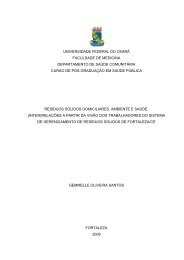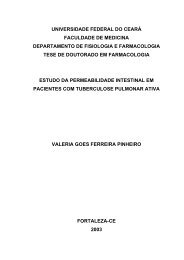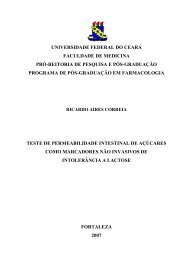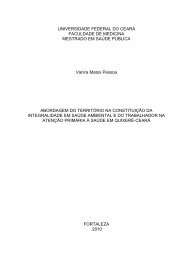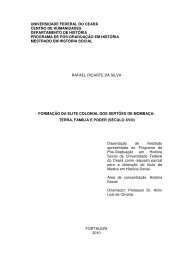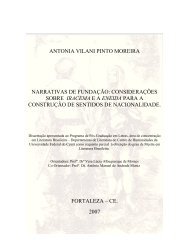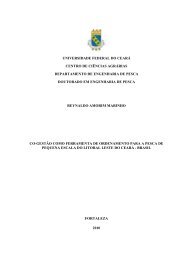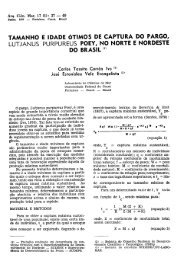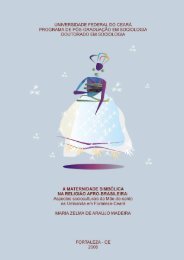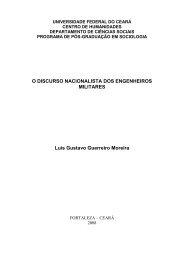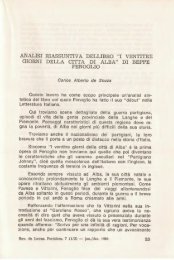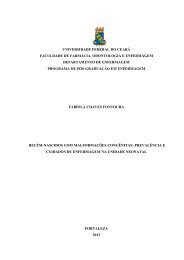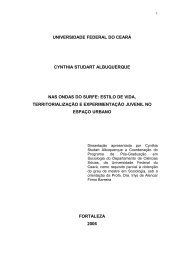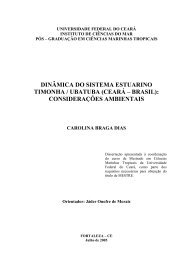Tungíase: doença negligenciada causando patologia grave
Tungíase: doença negligenciada causando patologia grave
Tungíase: doença negligenciada causando patologia grave
You also want an ePaper? Increase the reach of your titles
YUMPU automatically turns print PDFs into web optimized ePapers that Google loves.
Heukelbach et al – Tungiasis in Alagoas State, Brazil<br />
of relative frequencies. As data were not normally<br />
distributed, the median and the interquartile ranges<br />
were used to indicate the average and the<br />
dispersion of data. Significance of differences<br />
between quantitative measurements was<br />
calculated by the Mann-Whitney test.<br />
Ethical Aspects<br />
Ethical clearance was obtained from the<br />
Ethical Committee of the School of Health<br />
Sciences of Alagoas (Escola de Ciências Médicas<br />
de Alagoas), the responsible ethical body in<br />
Alagoas State, as well as from an ad hoc ethical<br />
committee of the health department of the<br />
municipality of Feliz Deserto. Prior to the study,<br />
meetings were held with politicians, community<br />
leaders, and health care workers to explain the<br />
objectives of the study. All participants were<br />
informed about the study and gave their written<br />
consent. In the case of minors, the legal guardians<br />
were asked for written consent. Superinfected<br />
lesions were treated with topical antibiotic ointment<br />
or oral Roxithromycin (Floxid®, two doses of 150<br />
mg over 5 days, Solvay Farma, São Paulo, Brazil).<br />
If other skin diseases were diagnosed during the<br />
surveys, the patients were referred to the primary<br />
health care centre of Feliz Deserto, where<br />
treatment is available free of charge.<br />
Results<br />
In the first survey in the rainy season<br />
(June/July 2003), 1,015 individuals of the target<br />
population of 1,146 (88.6%) were encountered and<br />
examined. During the second survey in the dry<br />
season (October/November 2003), 990 of 1,169<br />
(91.1%) individuals were examined.<br />
The overall prevalence of tungiasis was 21.6%<br />
in the rainy and 29.5% in the dry season<br />
(p



